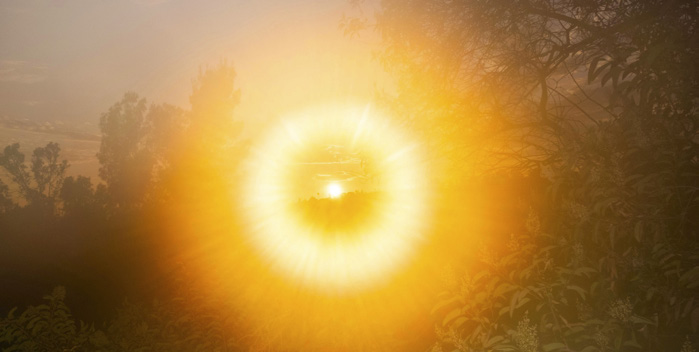
By Nicholas Kristof
Our world has recently faced its warmest summer ever documented, with 2024 on track to also become the hottest year recorded since records began.
The effects of this warming are evident in numerous ways: The city of Phoenix experienced 100 days of temperatures at or above 100 degrees this year; around 1,300 Hajj pilgrims in Saudi Arabia reportedly succumbed to the heat; Arctic ice is diminishing and far below normal levels; and in certain areas, monkeys and bats have fallen out of trees due to the heat.
We often concentrate on the catastrophic dangers of climate change — polar ice caps melting, sea levels rising sharply, our planet becoming unlivable — and these dangers are genuine. Yet over the past couple of decades, evidence has shown that the more ordinary impacts of heat are already affecting us, influencing our everyday lives. For instance, people are more prone to fall off ladders during hot days compared to cooler ones. They are also at a greater risk of self-harm. Furthermore, they are more likely to harm others.
Moreover, students achieve less on warmer days. Their exam performance declines. Following a natural disaster, students are less likely to enroll in college. In essence, extreme weather inflicts harm far beyond property damage, as it also devastates human potential.
“The familiar climate catastrophe narrative may overlook some of the most significant aspects of the actual climate change story,” R. Jisung Park, an economist at the University of Pennsylvania, remarks in his outstanding recent book, “Slow Burn.”
Park compellingly argues that we have been so engrossed in apocalyptic narratives that we have neglected to consider the other repercussions of climate change.
Unless we take more action to mitigate the effects on education, rising temperatures could diminish student learning in the United States by approximately 10% over the year, Park’s findings suggest. As Black and Latino students disproportionately reside in hotter areas and attend schools lacking sufficient air conditioning, increasing temperatures seem to exacerbate the educational disparity, according to Park.
Next, there are wildfires. We typically focus on the immediate harm caused by fires, such as the 20 to 30 fatalities that occur annually in America due to wildfires. However, wildfires associated with climate change are exposing more individuals to smoke, which could result in far greater fatalities.
Air pollution is already estimated to cause about 7 million deaths worldwide each year, primarily by exacerbating heart disease, respiratory conditions, and cancer. Researchers estimate that wildfire smoke is responsible for 5,000 to 15,000 deaths in the U.S. each year — yet these casualties go unnoticed since there are no dramatic images of flames to alarm us. People may believe their loved ones passed away from heart disease or natural causes, but climate change may have played a role.
Climate change may also affect crime rates, as studies indicate a rise in murder, aggravated assault, and rape during hotter weather. One researcher estimated that increased temperatures due to climate change could lead to an additional 1.6 million cases of aggravated assault and 200,000 more rapes in the United States over this century.
We know as well that high temperatures hinder our productivity. A study found that a naval officer commits an average of 11 or 12 errors per hour in Morse code translation at temperatures between 85 and 90 degrees, but that number skyrockets to 95 errors per hour when temperatures reach 105 degrees.
Even professional athletes feel the impact. Research examining tennis players shows a rise in double faults and shorter rallies when temperatures hit 95 degrees.
However, it’s crucial to remember that climate is multifaceted.
Twelve years ago, scientists were concerned that the Earth might warm by 4 degrees Celsius by 2100 relative to preindustrial temperatures, but it now appears more likely that the increase will be around 2.5 degrees or less (still dangerously high and completely unacceptable).
Additionally, scholar and author Bjorn Lomborg accurately points out that many more Americans perish from cold than heat. Therefore, escalating temperatures might plausibly result in a net decrease in American deaths. On a global scale, however, Park believes that “unmitigated climate change will lead to substantially higher mortality rates.”
My view is that we should embrace the complexity. We don’t need to exaggerate the dangers or create nightmares, as we now possess ample evidence that even at present levels of warming, we are inflicting significant harm on our species (not to mention to the monkeys and bats falling around us).
I have written my share of doomsday articles on climate, covering topics from “methane burps” to the acidification of oceans that is dissolving certain plankton essential to the food chain. These are valid issues. Yet catastrophic scenarios haven’t jolted us awake, and we shouldn’t allow them to divert us from the pressing challenge: If we permit warming to proceed, more individuals will be victimized by crime, children will learn less, and increased numbers will slip off ladders.
Reach Kristof on Facebook.com/Kristof, Twitter.com/NickKristof, or by mail at The New York Times, 620 Eighth Ave., New York, NY 10018.
